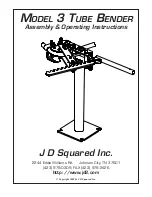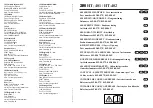
©
National Instruments Corporation
3-1
PCI-Based MXI-2 Interfaces for Windows 2000/NT/Me/98
3
Developing Your Application
This chapter discusses the software utilities you can use to start developing
applications that use NI-VXI.
After installing the NI-VXI software, you can begin developing your
VXI/VME application. Be sure to check the release notes for the latest
application development notes and changes.
NI-VXI, NI-VISA, and Related Terms
Before you develop your application, it is important to understand the
difference between
NI-VXI
,
NI-VISA
, and similar terms:
•
NI-VXI
is the software package that ships with National Instruments
VXI and VME controllers. NI-VXI includes Measurement &
Automation Explorer (MAX), NI-VISA, NI Spy, Resource Manager
(Resman), VXI device drivers, and other utilities for configuring and
controlling your VXI or VME system.
•
NI-VISA
is the native API for communicating with VXI/VME devices.
NI-VISA is the National Instruments implementation of the VISA I/O
standard, which is a common interface to many types of instruments
(such as VXI, GPIB, PXI, Serial, TCP/IP, etc.). NI-VXI is optimized
for use through NI-VISA, and we recommend using NI-VISA to
develop all new VXI/VME applications.
•
The
NI-VXI API
is an optional development environment that is
not part of the default NI-VXI installation. The NI-VXI API was
developed before NI-VISA; while NI-VXI still supports the NI-VXI
API, we recommend using NI-VISA for all new VXI/VME
applications. If you must develop an application using the older
NI-VXI API, run the NI-VXI installer and select the appropriate option
in the custom installation screen. Be sure to review the
section later in this chapter.
•
The
NI-VXI compatibility layer
allows older programs that use the
NI-VXI API to communicate with VXI devices through VISA. Using
this compatibility layer, older programs can run in NI-VXI 3.0 or later
without being rewritten to use the VISA interface. This layer installs
with NI-VXI by default. It should be completely transparent and
















































